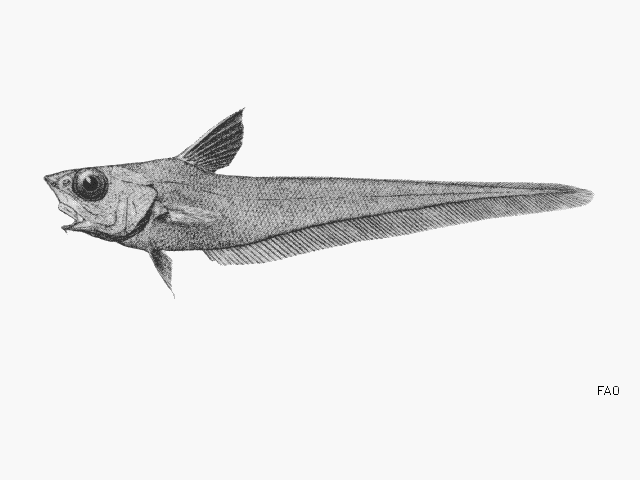| Macrouridae (Grenadiers or rattails) |
| 23 cm TL (male/unsexed) |
|
bathydemersal; marine; depth range 589 - 1400 m, non-migratory |
| Eastern Pacific: Panama to northern Peru. |
|
Dorsal spines (total): 2-2; Anal spines: 0-0. Snout short, conical, with a small but stout, distinctly bifid scute at its tip. Chin barbel very short. Underside of the snout and part of the suborbital space without scales; mandibular rami with loose scales along midline of each ramus; pores of the lateralis system indistinct on the head, although a small dark papillae is prominent. Pyloric caeca 17 to 25. Body scales are fairly large and deciduous, with lanceolate spinules arranged in convergent rows. Overall color is swarthy to brownish, the abdominal region bluish black; mouth dusky, gill cavity black except for pale areas ventrally and along medial wall; fins dark brown to brownish black. |
| Found on the continental slope (Ref. 9315). Feeds mainly on copepods and small benthic invertebrates (Ref. 9315). Minimum depth from Ref. 58018. |
|
Not Evaluated (N.E.) Ref. (130435)
|
| harmless |
Source and more info: www.fishbase.org. For personal, classroom, and other internal use only. Not for publication.

